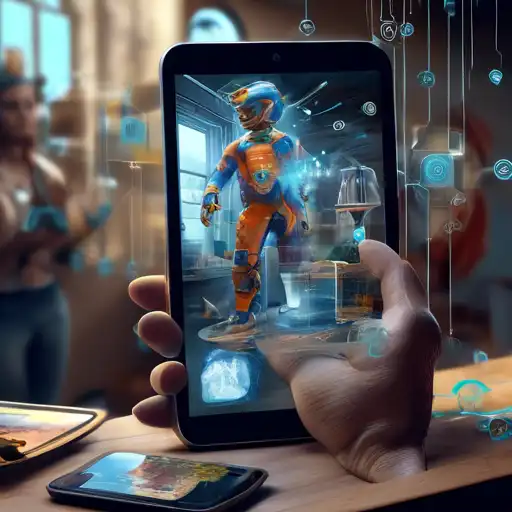Augmented Reality: The Future of Digital and Physical World Integration
Augmented Reality (AR) is transforming the way we interact with the world around us, seamlessly blending digital elements with our physical environment. This innovative technology is not just a futuristic concept but a present-day reality that's enhancing various sectors, including education, healthcare, retail, and entertainment.
Understanding Augmented Reality
At its core, AR overlays digital information—such as images, sounds, and text—onto the real world. Unlike Virtual Reality (VR), which creates a completely artificial environment, AR enhances the real world with digital details, offering a composite view that enriches user experiences.
The Impact of AR Across Industries
AR's versatility allows it to be applied in numerous fields, revolutionizing traditional practices and introducing new ways of engagement and interaction.
- Education: AR brings learning to life, making complex concepts easier to understand through interactive 3D models.
- Healthcare: From surgical simulations to patient education, AR is improving outcomes and enhancing care.
- Retail: Try-before-you-buy AR applications are changing the shopping experience, reducing returns, and increasing customer satisfaction.
- Entertainment: Games like Pokémon GO have showcased AR's potential to create immersive experiences that blend the digital and physical worlds.
How AR Works
AR technology relies on devices such as smartphones, tablets, and AR glasses to display digital content. These devices use cameras, sensors, and algorithms to detect the user's environment and overlay digital information in real-time, creating an interactive experience.
The Future of AR
As technology advances, AR is expected to become more integrated into our daily lives. With the development of more sophisticated AR glasses and the expansion of 5G networks, the possibilities are endless. From navigation aids that overlay directions onto the real world to virtual try-ons for clothes and makeup, AR is set to redefine convenience and accessibility.
Challenges and Considerations
Despite its potential, AR faces challenges, including privacy concerns, the need for high-quality content, and the requirement for robust hardware. Addressing these issues is crucial for AR's widespread adoption and success.
Augmented Reality is more than just a technological novelty; it's a tool that bridges the gap between the digital and physical worlds, offering endless possibilities for innovation and interaction. As we continue to explore and expand its applications, AR promises to reshape our reality in ways we've only begun to imagine.
For more insights into how technology is changing our world, check out our articles on Tech Trends and Digital Innovation.
